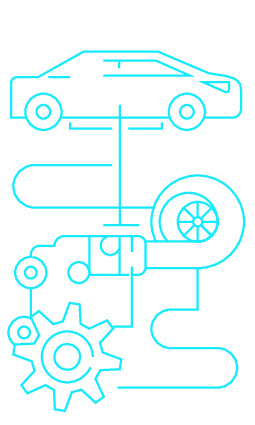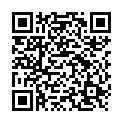|
|
|
| Module code: FT61 |
|
|
2V (2 hours per week) |
|
2 |
| Semester: according to optional course list |
| Mandatory course: no |
Language of instruction:
German |
Assessment:
Written exam
[updated 30.09.2020]
|
FT61 (P241-0308) Automotive Engineering, Bachelor, ASPO 01.10.2011
, optional course, specialisation
FT61 (P241-0308) Automotive Engineering, Bachelor, ASPO 01.10.2015
, optional course, specialisation, course inactive since 27.07.2017
FT61 (P241-0308) Automotive Engineering, Bachelor, ASPO 01.04.2016
, semester 6, optional course, specialisation
FT61 (P241-0308) Automotive Engineering, Bachelor, ASPO 01.10.2019
, semester 6, optional course, specialisation
MAB.4.2.4.6 Mechanical and Process Engineering, Bachelor, ASPO 01.10.2013
, optional course, specialisation
|
30 class hours (= 22.5 clock hours) over a 15-week period.
The total student study time is 60 hours (equivalent to 2 ECTS credits).
There are therefore 37.5 hours available for class preparation and follow-up work and exam preparation.
|
Recommended prerequisites (modules):
None.
|
Recommended as prerequisite for:
|
Module coordinator:
Prof. Dr.-Ing. Rüdiger Tiemann |
Lecturer: Prof. Dr.-Ing. Rüdiger Tiemann
[updated 10.02.2016]
|
Learning outcomes:
After successfully completing this course, students will be able to:
_ name the main criteria for the use of commercial vehicles based on technical and business management data,
_ describe technical solution possibilities for the application of systems in commercial vehicles and explain their mode of operation,
_ explain the interaction of the most relevant systems with each other with their advantages and disadvantages,
_ describe the most relevant design components and their design parameters,
_ apply the standard approach to the development of trucks using the knowledge they have acquired.
[updated 30.09.2020]
|
Module content:
Lecture block 1: Introduction to the commercial vehicle industry
1.1 Introduction
1.2 The Daimler Group
* What is the strategy behind a global corporation?
* What synergies exist between car and truck technologies?
* What are the technical/economic challenges?
* What does the future of vehicle traffic look like?
1.3 _Global Player_ (1): Daimler trucks, Daimler buses, Mercedes-Benz vans
* What does "Global Player" mean ?
* What are the requirements for a global player?
* How is global playing implemented?
* How can global playing be realized economically ?
* What opportunities/risks are there and how do you deal with them?
1.4 _Global Player_ (2): Competitors
* What does the market look like in individual regions?
* Can there be a global truck?
* How are competitors positioned and how are they organized?
* What are the effects of competition on in-house developments?
* Which vehicle concepts are possible for different customer requirements?
Lecture block 2: The "commercial vehicle" and its development
2.1 Definition of a commercial vehicle
* What is a commercial vehicle?
* What types of commercial vehicles are there? What are the differences?
* Why are commercial vehicles different?
* What does "modular system" mean?
2.2 History and technological development
* Since when have there been commercial vehicles?
* How have commercial vehicles developed and why?
* Which technologies make sense, which can be expected?
2.3 Transport economy and operating costs
* What does profitability mean? What is TCO?
* What influence do trucks have on TCO, what influence do technologies have?
* Which factors can influence manufacturers and entrepreneurs?
2.4 Legal framework conditions
* Which basic conditions have to be considered?
* What do solutions for market/region-specific requirements look like?
* How are technical solutions brought to market/homologized?
* What influence do laws have on development and cost structure?
2.5 Development processes
* What is the timeline for developing a commercial vehicle?
* What distinguishes new developments from facelifts?
* Which steps must be considered during development?
* What processes are used to develop trucks?
* How is quality verified, how is the operational fitness?
* Which methods are used in development?
* What influence do modern development methods have on costs and time?
Lecture block 3: Vehicle concept and components
3.1 Basic concept, complete vehicle
* Which boundary conditions influence the vehicle concept?
* Which assemblies determine the vehicle concept?
* How is a vehicle designed?
3.2 Cab and interior
* Which cab types are there?
* Which boundary conditions (laws, safety, ergonomics) have to be considered?
* How do customer requirements influence the design of cabs?
* What is a TruckClinic?
* What influence does the driver have on the design of the cabin?
3.3 Frames and attachments
* What is the main purpose of the truck frame?
* Which frame types are available and why? How do they differ?
* How is a frame designed?
* What are the functions of a truck frame and which attachments are available?
3.4 Lightweight construction
* What is lightweight construction?
* Why is lightweight construction used and which boundary conditions have to be considered?
* How can the gap between payload and costs be closed?
* What influence will lightweight construction have in the future?
3.5 Theory and practice _ The truck at your fingertips (semi-trailer truck)
* What does the transition from theory to practice look like?
* What are the names of the individual components?
* Why are the components located where they are? What are the alternatives?
* How do you evaluate the arrangement / operation / function of the individual assemblies?
Lecture block 4: Powertrain concepts, aggregates
4.1 Powertrain design
* Which boundary conditions must be considered?
* Why do I need a powertrain design? What is the purpose?
* How is a powertrain designed?
* What influence does the powertrain design have on the use of the truck?
4.2 Assemblies (engine, transmission, axles)
* Which assemblies does a truck have?
* Which boundary conditions have to be considered when choosing the assemblies?
* How are the assemblies constructed?
* How do the assemblies work? How do the assemblies interact?
4.3 Alternative drives and fuels
* Why is the powertrain the way it is?
* Which boundary conditions influence the drive type?
* Why do we need alternative drives?
* What alternative drives are available and what do they look like?
* What are the advantages and disadvantages of the alternative drives?
4.5 Theory and practice _ The truck at your fingertips (four-wheel drive tipper)
* What does the transition from theory to practice look like?
* Which differences between the semi-trailer truck and the tipper are obvious?
* Why are the components located where they are? What are the alternatives?
* How do you evaluate the arrangement / operation / function of the individual assemblies?
Lecture block 5: Vehicle systems and properties
5.1 Steering, wheel guidance, brake system, electrics, electronics
* What systems are required to operate a truck?
* Which boundary conditions must be considered when developing the systems?
* How do the systems in a truck work?
* How do individual systems work together to become a truck?
5.2 Evaluation methodology in testing and simulation
* How is a truck and its systems/components/properties evaluated?
* How is s truck tested?
* How do design, simulation and testing interact?
* Which methods are used to evaluate trucks?
5.3 Operational stability, vibration and noise comfort, driving behavior
* Which characteristics of a truck should be evaluated?
* How do these characteristics affect the real use of the truck?
* How can these characteristics be compared with those of market competitors?
* How can the characteristics of trucks be influenced during development?
5.4 Active and passive safety
* What is the difference between active and passive safety?
* Which components/systems influence the safety of trucks ?
* Which boundary conditions must be considered (laws, technology)?
5.5 The future truck 2025 _ Man and vehicle in harmony
* What will transport look like in the future?
* What does the truck of the future look like?
* Which tasks will the driver have in the future?
[updated 30.09.2020]
|
Teaching methods/Media:
Lecture notes
[updated 30.09.2020]
|
Recommended or required reading:
[still undocumented]
|


